

 A new year is beginning and also, probably, new discussions and new debates in the world of wine. What will be the main topics during 2013? Planting rights and the declining influence of Robert Parker?
A new year is beginning and also, probably, new discussions and new debates in the world of wine. What will be the main topics during 2013? Planting rights and the declining influence of Robert Parker?
Whatever it will be, the happy news is that the wine consumption in the world is again increasing. It does not mean that the wine producers can relax. Many still have to struggle to sell their wines and they have to be flexible and innovate to find new customers.
As always, it is an advantage to know what the customers want. In the US they know this much: the design of the label determines 50% of all wine purchases. So an appropriate New Year’s resolution for a wine producer might be to give the label design an extra thought.
If you like a label or not is of course a matter of taste. So, the producer must first decide which consumer group he is targeting. The traditional one or the modern and trendy one. For those producers who cannot make up their minds we recommend using a popular politician’s trick. Choose a middle of the road label to (hopefully) attract both groups.
We have all chosen wines by label sometime. It is nothing to be ashamed of. In the complex world of wine encounters with unknown wines and producers occur all the time. And a label actually says a lot, maybe more about the producer than the wine. Exactly what it says however, is not evident. I myself am easily seduced by chic, super designed labels. It shows a producer with initiative. This wine must be well made, I reason. Often I am right, but just as often the wine is a little too polished and impersonal for my taste. Whereas a dreary label something hides something really good.
A back label is often a good idea. It can help a confused supermarket customer to choose. A suggestion what to serve with the wine could be just the thing that triggers the buy. And do not forget to put the name of the grapes right there on the back if you have not already mentioned them on the front label. And it is better to be brief with large printing than the opposite. I would like to be able to read what it says even at the dinner table with romantic lighting.
And finally … remember…
… remember (1) that Champagne does not have exclusive rights to the technology of making bubbles. If you are drinking sparkling wine that is not champagne you are not drinking a copy! Prosecco, Crémant de Bourgogne, Crément the Loire, Cava, Champagne, it’s just different types of sparkling wine. With different origins, price tags and characters. Just as for reds and whites.
… remember (2) that you can still join us on one of the world’s best wine tours!
Happy New Year!
Britt & Per
PS: Recommend to your friends!
What’s on at BKWine Tours
- Chile & Argentina, 4-19 February
- South Africa, 1-11 March
- Bordeaux, 22-26 May
- Bordeaux, 18-22 September
- Douro Valley, Portugal, 23-27 October
For more information please contact us on email or on phone (we’re on French time), or go to our wine travel site on www.bkwinetours.com!
We also make custom designed wine tours – on-demand tours for you and a group of friends, for your company (maybe to scout new winegrowers?), for a special event… We can combine winery visits and wine touring with other activities: gastronomic workshops, visit to an oyster farm, truffles hunting, cheese making, and more. More info on the custom designed and bespoke BKWine wine tours and travel here!
Wine tours in Finnish: We also do wine tours in Finnish. And in German, Norwegian, Spanish…
Do you want the latest news and updates on our wine travel activity? Subscribe here! (Second alternative BKWineTours.com)
From the World of Wine
Faugères 2010 Les Premières, JM Alquier & Mas Cal Demoura L’Infidèle 2010 | Britt’s Wine(s) of the month
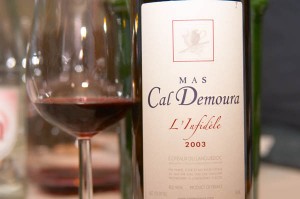 These are two high quality wines from the Languedoc. Both are elegant, complex and very drinkable.
These are two high quality wines from the Languedoc. Both are elegant, complex and very drinkable.
Faugères 2010 Les Premières
JM & Vé Alquier (14 euro)
Quite light in style, full of aromas, well made with freshness, fine acidity and length. The talented wine maker Jean-Michel Alquier, well known for his cuvées La Maison Jaune and Les Bastides, uses young vines for this wine. The grapes are a third each of grenache, syrah and mourvèdre.
Mas Cal Demoura L’Infidèle 2010 (14,50 euro)
Languedoc Terrasses du Larzac
Elegant and flavourful blend of grenache, syrah, carignan, mourvèdre och cinsault. Complex aromas of dark fruits and a fresh acidity. The wine has partly been aged for 18 months in oak barrels of 500 litres. The cuvee “L’Infidèle” is a tribute to Jean-Pierre Jullien, the founder of Mas Cal Demoura. The present owner, Vincent Goumard, believes that thanks to the fact that Jean-Pierre was unfaithful (infidèle) to the traditional way of making wine in the region, he build the reputation of the domaine.
A soul-full meeting with winemaker Sandra Tavares da Silva in the Douro Valley
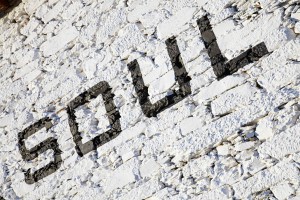 Sandra Tavares da Silva is one of the young and talented wine growers today in the Douro Valley. Together with her husband, Jorge Borges Serôdio, she started the company Wine & Soul just over 10 years ago. She makes red and white Douro wines of high quality and she also knows how to attract new consumers to port wines.
Sandra Tavares da Silva is one of the young and talented wine growers today in the Douro Valley. Together with her husband, Jorge Borges Serôdio, she started the company Wine & Soul just over 10 years ago. She makes red and white Douro wines of high quality and she also knows how to attract new consumers to port wines.
Britt met her in the beautiful Douro vineyards. Read the full article on BKWine Magazine: Wine with a soul: port & other wines from Wine & Soul in the Douro
No Château d’Yquem 2012
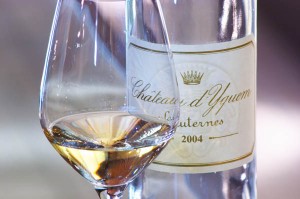 There will be no 2012 vintage of Château d’Yquem, the most famous Sauternes chateau. The conditions for the development of noble rot was bad this year, and the chateau’s director Pierre Lurton would rather refrain from making an Yquem wine than to make one with little concentration. Last time it happened was in 1992, says Drinks Business.
There will be no 2012 vintage of Château d’Yquem, the most famous Sauternes chateau. The conditions for the development of noble rot was bad this year, and the chateau’s director Pierre Lurton would rather refrain from making an Yquem wine than to make one with little concentration. Last time it happened was in 1992, says Drinks Business.
The grapes that were nonetheless harvested will instead be used to the chateau’s dry wine, Y d’Yquem. We have tasted it a few times and it is a fabulous wine. It is relatively dry, of course, but usually with a little residual sugar, maybe 7-10 grams. You have some honey character from the botrytis and a lot of complexity.
We have also received information from the producer organization for Sauternes & Barsac saying that those who will make a Sauternes in 2012 are pretty happy with the quality. The noble rot was slow to start and most of the chateaux harvested in October. Ripeness was uneven as was the attack on the grapes by the noble rot which made it very difficult to harvest. It was crucial to make a strict selection of the grapes. It will not be a vintage of great concentration, it is believed, but rather a vintage with finesse and elegance.
Sicily seduces
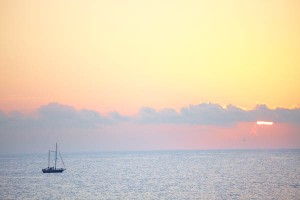 Sicily seduces you with its nature, culture, gastronomy and wines. Surprisingly fresh and aromatic whites and interesting and flavourful reds. Britt has been there and shares her impressions of this mountainous, wild but very charming island, the largest in the Mediterranean. She remembers the scent of the orange flowers that fill the air in springtime, the black lava soil of Mount Etna, the fresh prawns from the small villages near the harbour…
Sicily seduces you with its nature, culture, gastronomy and wines. Surprisingly fresh and aromatic whites and interesting and flavourful reds. Britt has been there and shares her impressions of this mountainous, wild but very charming island, the largest in the Mediterranean. She remembers the scent of the orange flowers that fill the air in springtime, the black lava soil of Mount Etna, the fresh prawns from the small villages near the harbour…
Read the full article on BKWine Magazine: Sicily Seduces.
The end is nigh! Vintage wines as we know them to disappear?
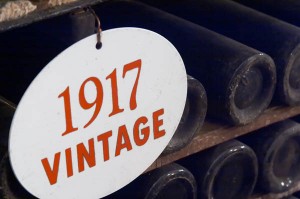 Well, the world did not end this December as some thought it would. But perhaps it is the end of vintage wines as we know them? Some years the vines yield abundantly, other years they give very little. That is life for the wine maker. But now the door is opening for the possibility to blend wines of different vintages and still call the wine a “vintage” wine, thanks to the “individual supplementary volume”. Thanks to this new regulation a winemaker can mix vintages but still put a year on the label.
Well, the world did not end this December as some thought it would. But perhaps it is the end of vintage wines as we know them? Some years the vines yield abundantly, other years they give very little. That is life for the wine maker. But now the door is opening for the possibility to blend wines of different vintages and still call the wine a “vintage” wine, thanks to the “individual supplementary volume”. Thanks to this new regulation a winemaker can mix vintages but still put a year on the label.
Read more in Britt’s article on BKWine Magazine: Is it good for the wine consumer that the producers are now allowed to blend vintages with VCI?
Wine more important than football (soccer)!
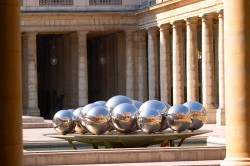 In France, people talk more frequently about wine than about football (the European soccer version of course). 72% of the French say they talk about wine with some regularity, but only 44% talk about of football.
In France, people talk more frequently about wine than about football (the European soccer version of course). 72% of the French say they talk about wine with some regularity, but only 44% talk about of football.
Furthermore, 87% of French claim that they bring wine as a gift when they are visiting friends and the figure is 83% when people go to birthday parties.
La Vigne write about this and a few other things here: LaVigne-Mag.
Eating good food and drinking delicious wine is an act of culture. In France at least.
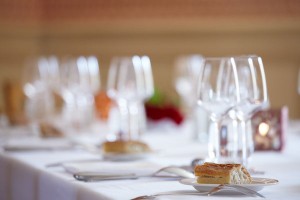 The gastronomic meal of the French is something worth preserving. And this is also the opinion of UNESCO. Since 2010 it is on the world heritage list of intangibles assets. It is not, however, as yet considered as endangered. But what exactly is a French gastronomic meal? It follows a strict pattern. It takes more than just a Boeuf Bourguignon on the table.
The gastronomic meal of the French is something worth preserving. And this is also the opinion of UNESCO. Since 2010 it is on the world heritage list of intangibles assets. It is not, however, as yet considered as endangered. But what exactly is a French gastronomic meal? It follows a strict pattern. It takes more than just a Boeuf Bourguignon on the table.
Britt explains more about it on BKWine Magazine: ”Gastronomic meal of the French” – a cultural heritage.[divider_flat]
Wine tour to amarone-land, wine and food of Tuscany, restaurants in the Douro Valley in Portugal
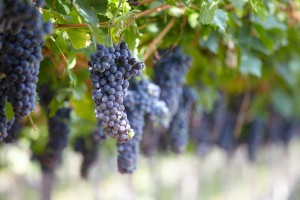 A few memories from some travel destinations this autumn can perhaps brighten the dark winter days? Here are a few samples from the travel blog on BKWineTours.com:
A few memories from some travel destinations this autumn can perhaps brighten the dark winter days? Here are a few samples from the travel blog on BKWineTours.com:
- Italian lunches tend to take quite a long time and tend to include a lot of different things. It is almost inevitable to start with some charcuteries, dried ham, sausages and cheese (but who would want to avoid that?!)… Wine tour in Tuscany: Gourmet lunch at San Donato
- They want you to have the feeling as if you enter into someone’s home when you come to The Ode Restaurant in Porto, and that is exactly how it is. The starter is served downstairs on a simple bench with some well-chosen bread, ham, cheese and olives before you go upstairs to sit down for the main course… A traveller’s report from the Douro Valley wine tour with a restaurant recommendation in Oporto
- Amarone, Valpolicella, Soave…. The wines are extremely popular today. Our wine tours to Veneto, around Verona, where they make these wines, are also very popular, among our most sought after travel destinations. New sample wine travel program: amarone, Valpolicella, Soave, Bardolino
Why increase the alcohol level in the Languedoc? Stop chaptalisation!
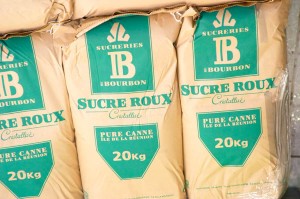 We have said it before and we will say it again: Why chaptalise in Languedoc? This is southern France we are talking about. With sun and heat during the growing season. These wines should have enough natural sugar to provide a decent alcohol level without having to add sugar or concentrated grape must
We have said it before and we will say it again: Why chaptalise in Languedoc? This is southern France we are talking about. With sun and heat during the growing season. These wines should have enough natural sugar to provide a decent alcohol level without having to add sugar or concentrated grape must
The reason we bring it up here again is that the IGP Pays d’Oc-producers (former Vin de Pays d’Oc) have realized that there will be a lack of concentrated grape must during 2013. Spain is the big supplier of concentrated grape must and, as in most countries in Europe. Their production went down in 2012. This means that if producers in Languedoc want to chaptalise they will probably be forced to use sugar instead. They are not at all happy about that. Well, there is an easy solution. Guess which one!
Read more in La Vigne.
Languedoc-Roussillon is, according to EU definition, in zone CII. This means that you can add sugar or concentrated grape must to increase the alcohol level with a maximum of 1.5% and not more than up to 13%. So if you buy a Languedoc wine with more alcohol than 13 % you know it is not chaptalised. And most good quality Languedoc wines are more likely to have higher alcohol.
What is quality wine? To the barricades! More tannins to the people!
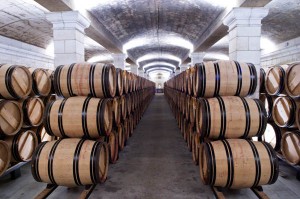 What are the characteristics of a good wine? A wine with class and quality? What makes it different from a commonplace, cheap wine? Britt has a feeling that structure, acidity, tannin and body has a lot to do with it. She wonders what kind of wine that people actually want. Why is Amarone so popular and astringency something to be avoided at all costs?
What are the characteristics of a good wine? A wine with class and quality? What makes it different from a commonplace, cheap wine? Britt has a feeling that structure, acidity, tannin and body has a lot to do with it. She wonders what kind of wine that people actually want. Why is Amarone so popular and astringency something to be avoided at all costs?
Read more in this month’s column by Britt: The importance of being structured.[divider_flat]
From wine lake to wine desert? Will we have a wine penury? World wine production and consumption.
The world’s wine acreage is shrinking. Now we have only 7.5 million hectares of vineyards, with three ”old” wine countries in the top. Wine production, too, is shrinking, especially in 2012 when production decreased with 16 million hectolitres to 248 Mhl. And for production too it is a “old classic” that tops the league. (Do you know which country is the world’s top wine producer?) However, half of the countries on the top-ten list are New World countries! The wine consumption is not shrinking but rather going up. Almost stable in 2011. So the risk is that there will be too little wine supply compared to wine demand in the future…
Read more about world wine statistics on BKWine Magazine: Fascinating wine statistics: vineyards, wine production and wine consumption.
Have you seen the “Beaujolais Premier Cru”?
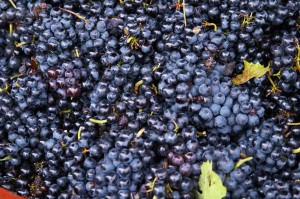 Yes, maybe we will have Beaujolais Premier Cru in less than ten years. Beaujolais continues its struggle to improve its image and to play in the higher leagues. Four years ago it began to analyze its vineyards to find the best plots. To add premier cru vineyards to the 12 Beaujolais appellations will help consumers find their way but the idea is also to make it possible to increase the average price of Beaujolais wine and to show that Beaujolais wine can age.
Yes, maybe we will have Beaujolais Premier Cru in less than ten years. Beaujolais continues its struggle to improve its image and to play in the higher leagues. Four years ago it began to analyze its vineyards to find the best plots. To add premier cru vineyards to the 12 Beaujolais appellations will help consumers find their way but the idea is also to make it possible to increase the average price of Beaujolais wine and to show that Beaujolais wine can age.
Beaujolais will use the same principle as in Burgundy. Vineyards that have the potential to produce extraordinary grapes will be identified and classified. A good guess is that Côte de Py in Morgon is a future Premier Cru.
More here: thedrinksbusiness.com
Nittardi in Tuscany, a wine and art enthusiast
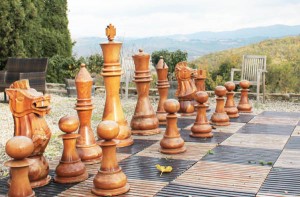 We know of several wineries where beautiful works of art are on display in the cellar and in the vineyard. Åsa has visited Nittardi in Tuscany, owned since 1981 by a German-Italian couple that also has an art gallery in Frankfurt. Besides having sculptures and pictures by well known artist here and there the couple also engages an artist each year to design the label of their prestige wine. And just like Château Mouton-Rothschild they manage to attract very well-known artists for the job.
We know of several wineries where beautiful works of art are on display in the cellar and in the vineyard. Åsa has visited Nittardi in Tuscany, owned since 1981 by a German-Italian couple that also has an art gallery in Frankfurt. Besides having sculptures and pictures by well known artist here and there the couple also engages an artist each year to design the label of their prestige wine. And just like Château Mouton-Rothschild they manage to attract very well-known artists for the job.
Read more about Åsa’s visit to Nittardi on BKWine Magazine: Wine and art blend well at the Nittardi winery in Tuscany.
Maine lobster from Kansas? Scotch from the Jura? American Champagne?
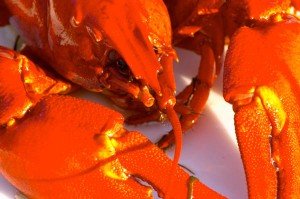 Americans must learn to respect names of origin. The Champagne Bureau USA has tried before to teach them and now it is trying again. A new advertising campaign has just been launched in the United States. The idea behind the campaign is to show Americans that it is wrong to call American bubble Champagne.
Americans must learn to respect names of origin. The Champagne Bureau USA has tried before to teach them and now it is trying again. A new advertising campaign has just been launched in the United States. The idea behind the campaign is to show Americans that it is wrong to call American bubble Champagne.
To strengthen its argument the ads will feature a Maine lobster presented as “Maine lobster from Kansas.” This statement is supposed to be so ridiculous for an American, that he will immediately comprehend that champagne comes from Champagne. Sounds easy but maybe the problem is that Champagne is somewhere far away while most Americans probably know where Maine and Kansas is. Read more here www.champagne.us.
In 2006, the U.S. Congress approved a law that prohibits the use of the word Champagne for American sparkling wines. However, there is a loophole. The law does not apply to producers who already used the word “Champagne” on their labels in 2006. They can continue to do so. So there is a lot of fake champagne around in US stores and restaurants.
I wonder what the outcome of the campaign will be. Maybe it will get more people to drink champagne (real or fake) with lobster?
Even more on Sicily: a photo essay
This photo essay will show you the magnificence of Sicily: the food, the wines, the landscape, the culture, the people. Sometimes a picture is worth a 1000 words.
See some of our photos from Sicily, and dream about your next holiday, on BKWine Magazine: Sicily: wine, food, vineyards, history, and landscape in pictures[divider_flat]
Environmental friendly electro-dialysis?
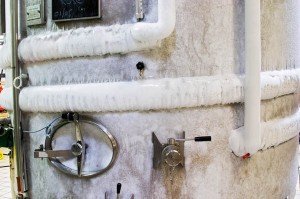 There have been more reactions to the EU rules for organic wines. The French company Oenodia is upset about the fact that the rules ban organic wines from using electro-dialysis.
There have been more reactions to the EU rules for organic wines. The French company Oenodia is upset about the fact that the rules ban organic wines from using electro-dialysis.
Oenodia specializes in the treatment of wine with membranes, including electro dialysis. The company says that electro dialysis is a natural technique that does not change the character of the wine or the taste and it does not require any additives. It is 20 times less energy demanding than cold stabilization, making it an environmentally friendly process, they say.
According to Oenidia electro dialysis is widespread in wine regions across the world, especially in the US where it is permitted for organic wines.
Vitisphere write more about this here: vitisphere.com
Electro-dialysis is used for tartrate stabilization (as an alternative to cold stabilisation). The method involves reducing levels of potassium in wine using an ion exchange membrane. Electro-dialysis may be an energy-efficient process, but the technique of ion exchange is seen as highly questionable in the organic sphere within the EU.
Wine events calendar
Send us an email if you have some event you want on the calendar.
Don’t be an egoist! Share with your friends and other wine enthusiasts! Forward the Brief to your friends! Suggest that they sign up for a free subscription !
© Copyright BKWine






